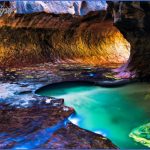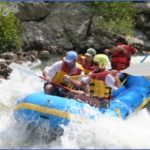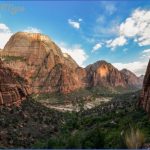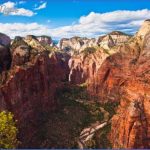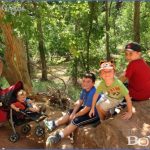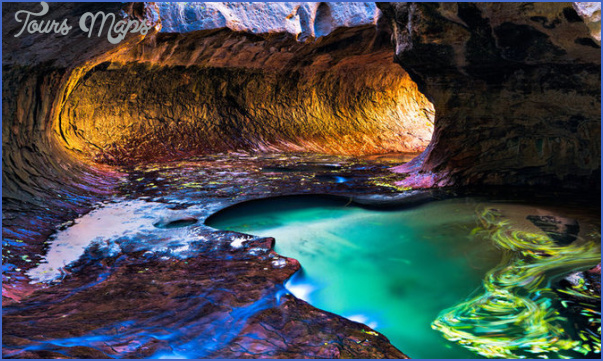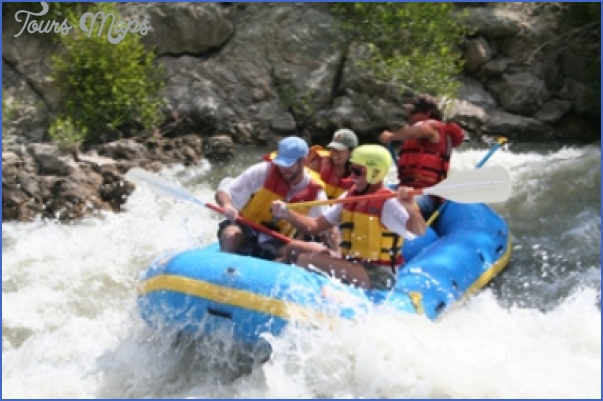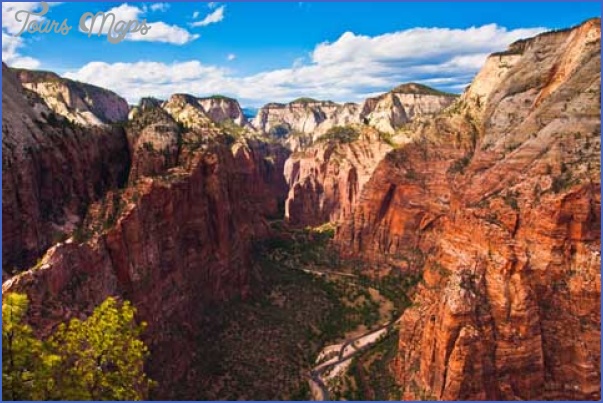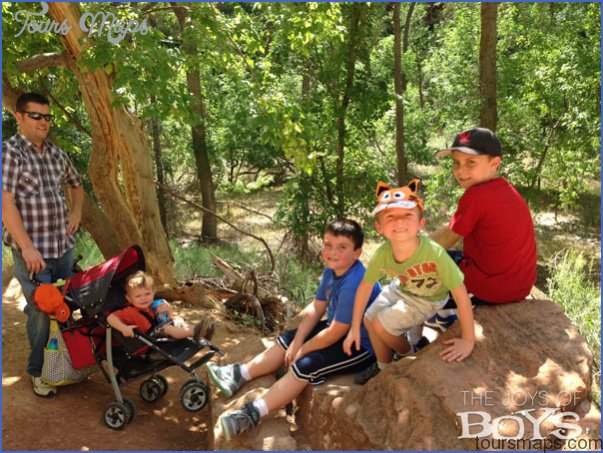Angel’s Landing
Images of/ from Angel ‘ s Landing
One of the most memorable hikes in the entire National Park System is the 5.4-mile (roundtrip) adventure to Angel’s Landing. Calling it an adventure sells it short. The last 0.5-mile is a hair-raising experience that takes you along a knife-edge ridgeline with 500 foot drops on either side. The journey begins at Grotto Trailhead Parking Area, located just beyond Zion Lodge. Once you’ve arrived at the trailhead, immediately cross the Virgin River via a short suspension bridge. On the opposite side of the river, ignore Kayenta Trail and head north, making a steady climb toward the mouth of Refrigerator Canyon. As you approach the mouth of the canyon you will loop back and ascend the canyon wall via 21 switchbacks known as Walter’s Wiggles. The ascent takes you to Scout’s Lookout, which provides impressive views of Zion Canyon and a closer look at the landing. Do not follow the trail to the northwest, which leads into the backcountry and away from Angel’s Landing via West Rim Trail. At Scout’s Lookout you may begin to second guess your plans. The next 0.5-mile should never be attempted wearing improper footwear or in bad weather conditions. It is much more intimidating from a distance than up close, but there are no guardrails. Only a series of chains aid your passage along the backbone of Angel’s Landing. Once you’ve made it to the promontory, have a seat, take a drink, and enjoy the view.
Zion Narrows
The Narrows is an iconic hike following the Virgin River as it winds its way through a 2,000 foot deep canyon that is, as its name implies, narrow (20 – 30 ft). The water is cold, the rocks are slippery, and the sun rarely penetrates its depths, making the trek challenging and exhilarating. You will wade through knee-deep water and take the occasional swim across deep holes. Visitors can explore the Narrows three ways: day-hike from Mount Sinawava, day-hike the entire length beginning at Chamberlain Ranch, or backpack overnight.
A day-hike into the canyon from Mount Sinawava Shuttle Stop via Riverside Walk is the simplest option. You are free to hike to Orderville Canyon, the most scenic and popular stretch, without a permit.
The alternatives eschew crowds, but require a backcountry permit. Completing the entire Narrows requires arranging a shuttle (providers listed in the What’s Nearby section), since it’s a one-way hike. The journey begins outside park boundaries at Chamberlain Ranch, accessed via North Fork Road, just outside the park’s East Entrance. Ambitious hikers can day hike the entire 16-mile canyon in 10 – 14 hours. If you’d like to take your time and enjoy the scenery, spend a night at one of 12 backcountry campsites. Hiking the entire canyon provides hikers with the added bonus of solitude. You’ll feel alone in the Narrows until reaching Orderville Canyon, where you’ll meet the day-hikers from Mount Sinawava.
The best time of year to hike the Narrows is late spring to early summer. Cool water of the Virgin River will be refreshing as you spend more than half of your hike wading. Wear sturdy shoes and carry a walking stick. Be sure to check the weather before entering the Narrows, as flash flooding and hypothermia are constant dangers. See the What’s Nearby section for guide services, shuttle, and gear rental.
Backpacking is allowed at designated sites along four popular trails. Zion Narrows has 12 campsites, all located above the high-water line of the Virgin River and upriver from Big Spring. West Rim Trail, from the Grotto to Lava Point Primitive Campground, is the most popular backpacking trail, with a total of nine designated campsites along the way. If you can arrange a shuttle, begin hiking at Lava Point Campground. From here, it will be a mostly downhill 14.2-mile trek that can be completed in two days without a problem Kolob Canyons’ only suitable backpacking route is La Verkin/Kolob Arch Trail, including its spur through the Hop Valley. There are also designated campsites in the park’s southwest corner along Coalpits Wash and Scoggins Wash. In addition to the designated campsites, backpackers are allowed to camp in specified zones as long as they are one mile from roads, out of sight of trails, and 0.25-mile from springs. Spring and fall are the best seasons for backpacking trips. A permit is required for all overnight stays in the backcountry.
Travel to Zion National Park Photo Gallery
Maybe You Like Them Too
- Explore East Lindfield, Australia with this detailed map
- Explore Bonferraro, Italy with this detailed map
- Explore Doncaster, United Kingdom with this detailed map
- Explore Arroyito, Argentina with this Detailed Map
- Explore Belin, Romania with this detailed map

